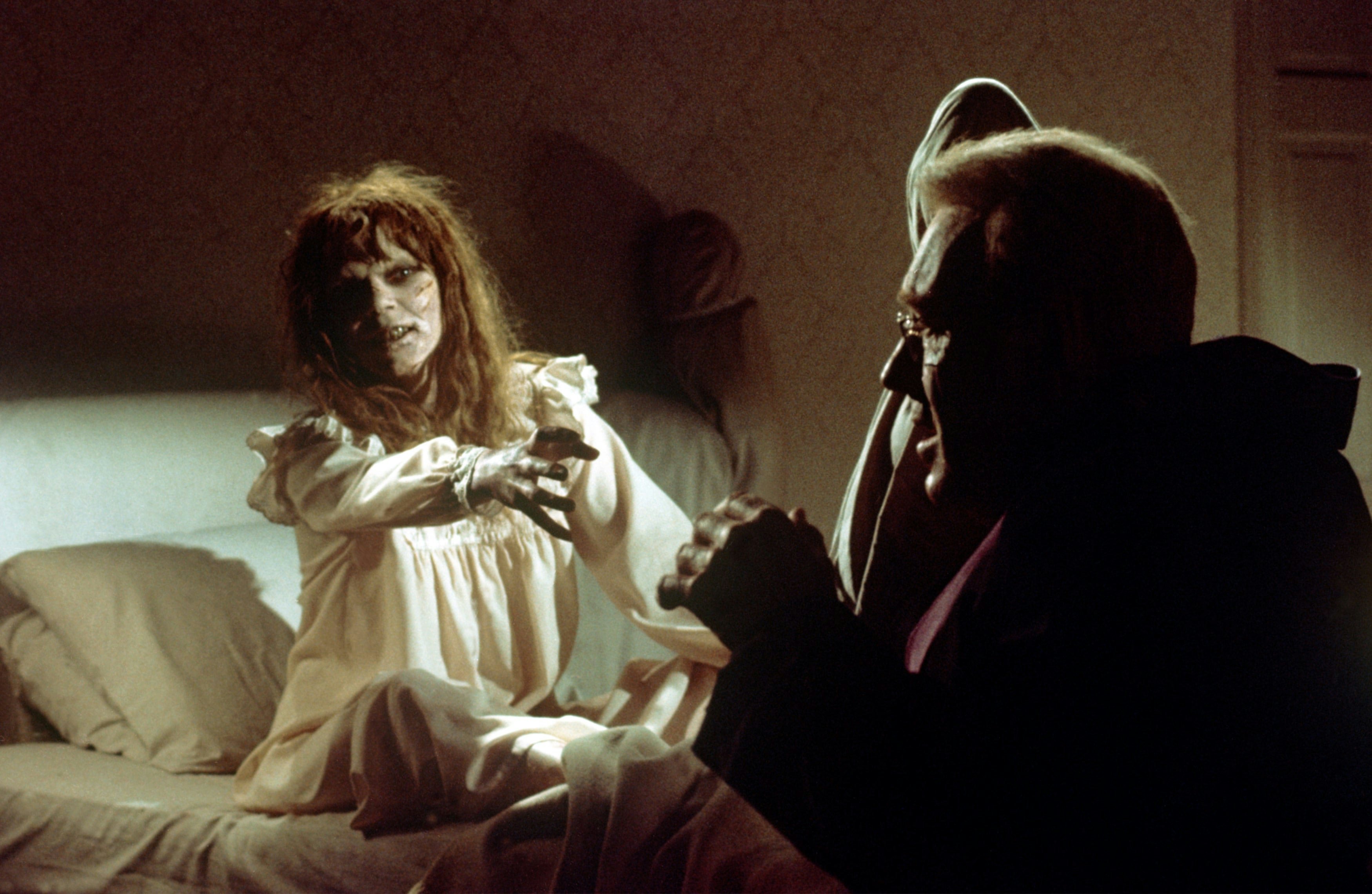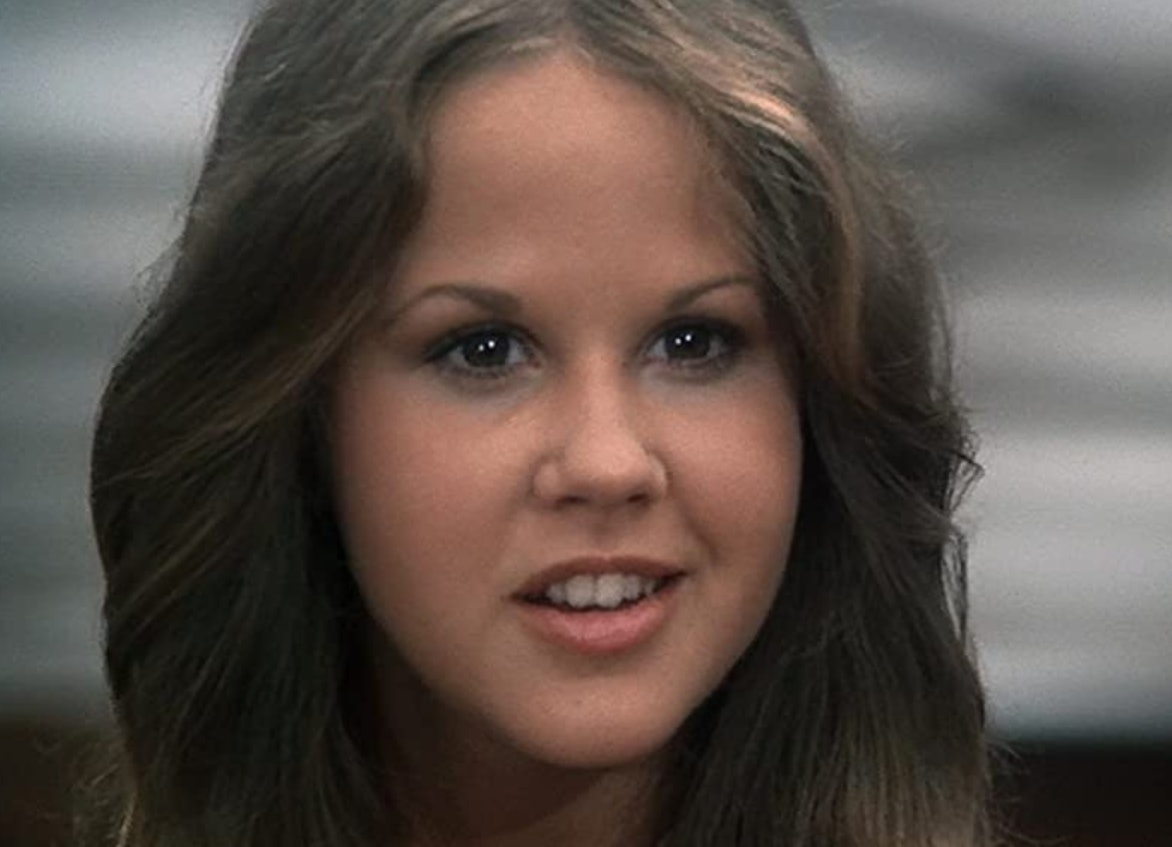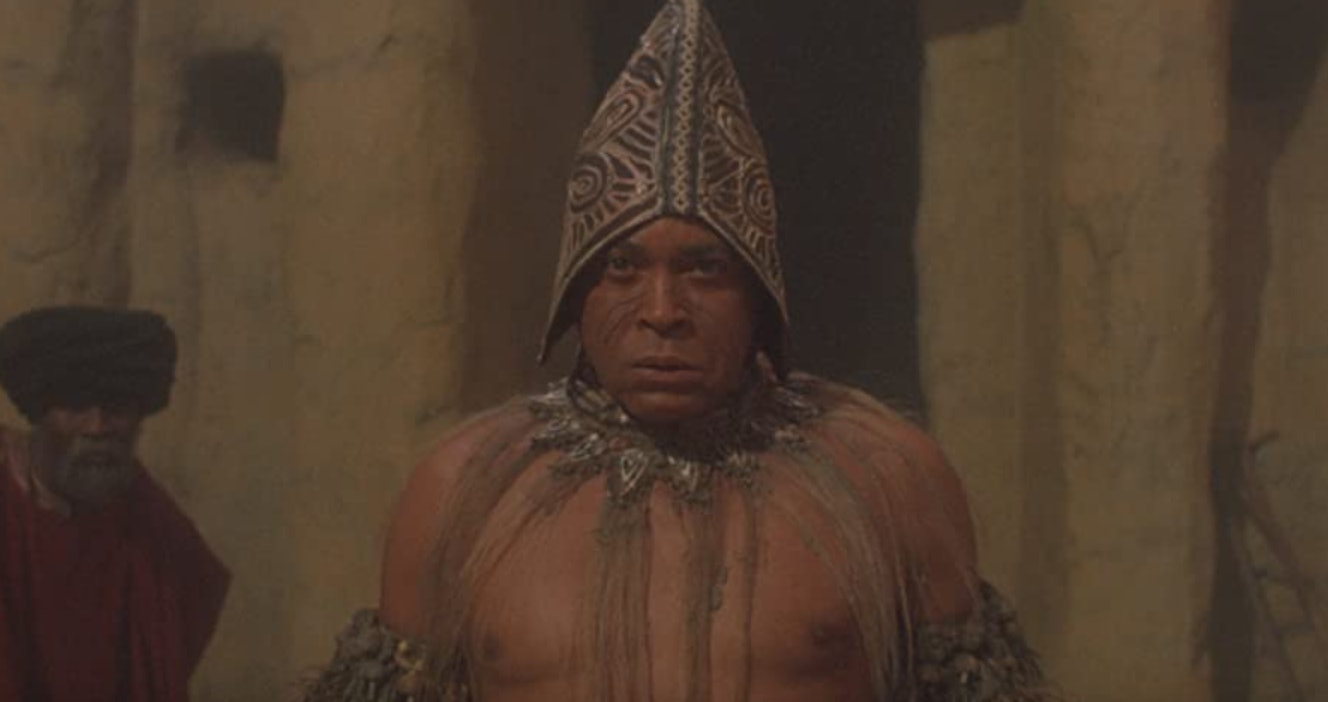
You know something has gone very wrong when the follow-up to a horror movie that left cinemagoers so traumatized they needed medical attention instead leaves them rolling in the aisles with laughter. “You’d think we were watching The Producers,” remarked William Friedkin, director of the original Exorcist, after Exorcist II: The Heretic’s 1977 New York premiere. Four decades later, he’d stick the knife in even further by describing it as “the worst piece of shit I’d ever seen.”
Friedkin, like producer/writer William Peter Blatty, had wisely turned down the opportunity to revisit the scene of bone-crunching head twists, genital mutilations, and regurgitated pea soup. What was the point in trying to improve on a film many considered perfect? Richard Lederer, one of the several people involved in the original who did return for the sequel, had an obvious answer: cold hard cash. The admirably honest co-producer freely admitted that The Heretic was conceived as nothing more than a “low-budget rehash” heavily reliant on unused footage from The Exorcist.
Had the results actually been a forgettable cash-in, as intended, the film’s reputation probably wouldn’t be so abominable; even before Hollywood started churning out sequels like clockwork, cynical facsimiles were becoming the norm. (See everything from Jaws II to The Bad News Bears Go to Japan). But The Heretic, which celebrates its 45th anniversary today, is not your garden-variety bad sequel. What lands it on so many all-time worst lists is a tone at once wildly different from the original and utterly batshit insane.
Director John Boorman, who’d previously helmed another of the most effective thrillers of the 1970s, Deliverance, certainly wasn’t interested in a lazy retread. The Oscar nominee had actually rejected an offer to direct the first Exorcist on the grounds that its story was, in his words, “rather repulsive.” That should have rung alarm bells for producers the second time around, too, yet somehow Boorman was given the freedom to retool the film as a metaphysical thriller. And a mind-boggling one at that.

Indeed, while The Exorcist’s premise could be summarized succinctly (priests attempt to save a 12-year-old girl from demonic possession), its sequel’s determination to answer all kinds of existential questions in the space of just 102 minutes results in an incomprehensible mess. The crux of the story is that Regan (Linda Blair), now a teenager, is still recovering from the exorcism that turned her into a projectile-vomiting, crucifix-masturbating demon four years earlier. Well, she can’t actually remember any of her ordeal but is forced to relive it by psychiatrist Dr. Tuskin (Louise Fletcher) via a synchronizer (basically a glorified headband) which allows them both to view her repressed memories.
Also getting in on the total recall action is Father Philip Lamont (Richard Burton), a holy man tasked by the Vatican with discovering how and why the original film’s Father Lankester Merrin (Max von Sydow) died — a gig Lamont lands in spite of the poor possessed girl he accidentally burns alive in the exorcism scene that opens the movie. It’s during one of the unconvincing telepathic sessions that Lamont learns that Regan’s old, uninvited guest, Pazuzu, also previously inhabited — and was defeated by — a young African boy named Kokumo while the demon took the form of a swarm of locusts. Cue a trip to Ethiopia to track down the man who may well hold all the answers.

The Heretic only gets more unfathomable from here. Lamont meets the grown-up Kokumo (James Earl Jones), now a scientist specializing in locusts (and occasionally resembling one). Regan starts magically curing the autistic. And her doppelgänger succubus emerges to wreak havoc in a bonkers finale that involves everything from taxi crashes to self-immolation.
The disorientation isn’t helped, either, by the differing performance styles. Blair, who’s since described The Heretic as one of the highlights of her life, wanders around in a daze throughout, barely reacting to any of the madness that unfolds. A similarly lethargic Fletcher, fresh from Academy Award-winning success as One Flew Over the Cuckoo’s Nest’s Nurse Ratched, has blatantly signed up just for the paycheck. At the opposite end of the spectrum, meanwhile, is Burton. A last-minute replacement for Jon Voight, the screen legend was reportedly struggling with alcoholism at the time and his performance as the bellowing, histrionic priest is erratic, to say the least.
Throw in a rare underwhelming Ennio Morricone score — Mike Oldfield’s fantastically eerie Tubular Bells joins Ellen Burstyn on the list of notable absences — and it’s not hard to see why The Heretic reportedly inspired some disgruntled fans to chase Warner Bros. execs up the street. Still, it’s not completely without its admirers. None other than Martin Scorsese claimed the film surpassed the original, while celebrated critic Pauline Kael argued it had “more visual magic than a dozen movies.”

The latter remark isn’t as hyperbolic as it may sound. Sure, the locust POV shot and African landscapes blatantly built on a studio backlot add to the unintentional amusement.ButThe Heretic also boasts several visually striking sequences worthy of being mentioned in the same breath as The Exorcist’s: the wince-inducing test of faith where Lamont steps onto a bed of nails, for example, or the nightmarish scene in which a sleepwalking Regan nearly falls to her death from a high-rise apartment. There’s a haunting fever dream quality, too, to the memory sessions that cleverly interweave the past with the present. You might not always know what’s going on in The Heretic but it usually looks impressive all the same.
Remarkably, The Heretic remains the only Exorcist sequel to recoup its budget during its theatrical run. Its $30.7 million gross, however, wasn’t quite enough to convince studio bosses to immediately greenlight a third installment. Fans had to wait another 13 years for 20th Century Fox to revive the series. The far superior, Blatty-directed The Exorcist III pretends The Heretic never happened.
That’s unsurprising and understandable. Even Boorman admitted he dropped the ball in a 2005 interview. Yet while his vision remains utterly mystifying (there’s a reason why it’s never enjoyed a critical re-evaluation), you have to admire the sheer audacity. To borrow a quote from Lamont, “It’s horrible, utterly horrible, but fascinating.”







